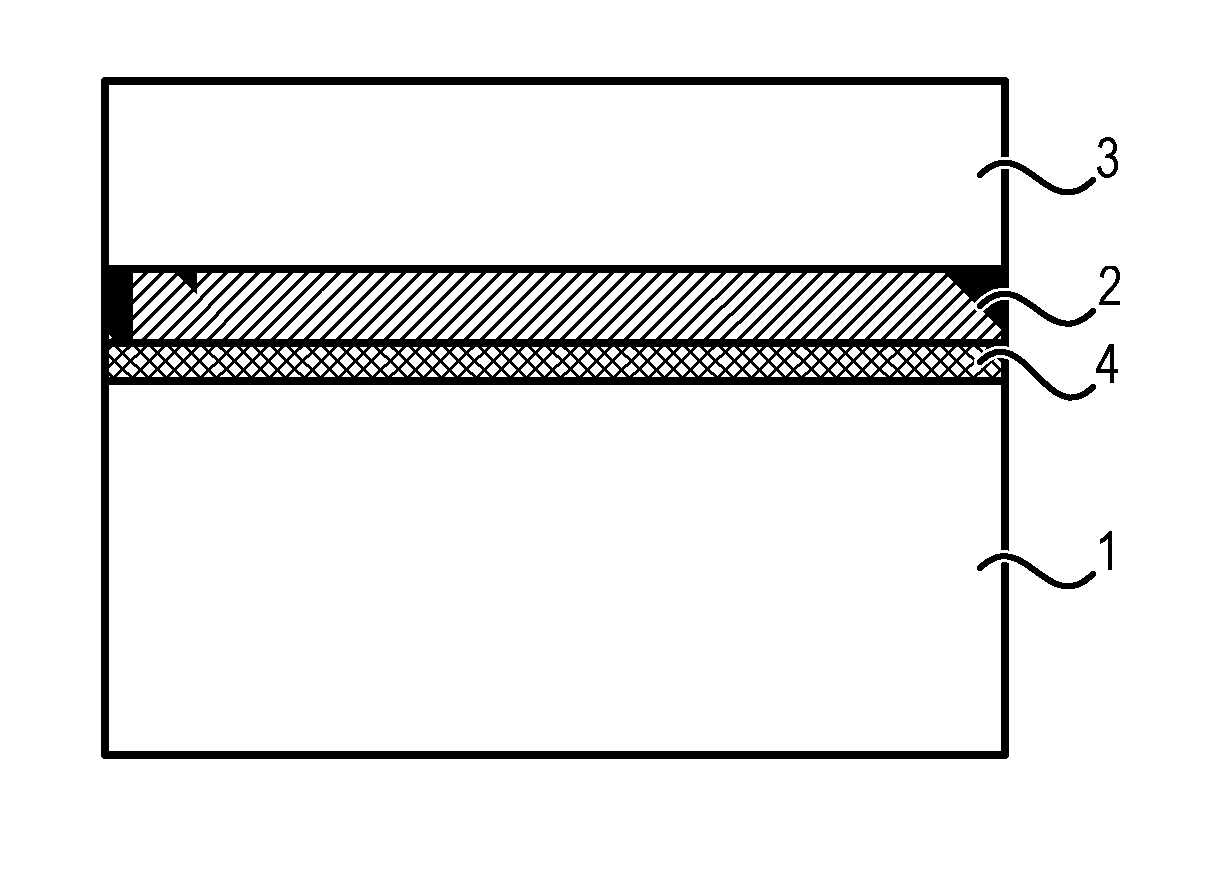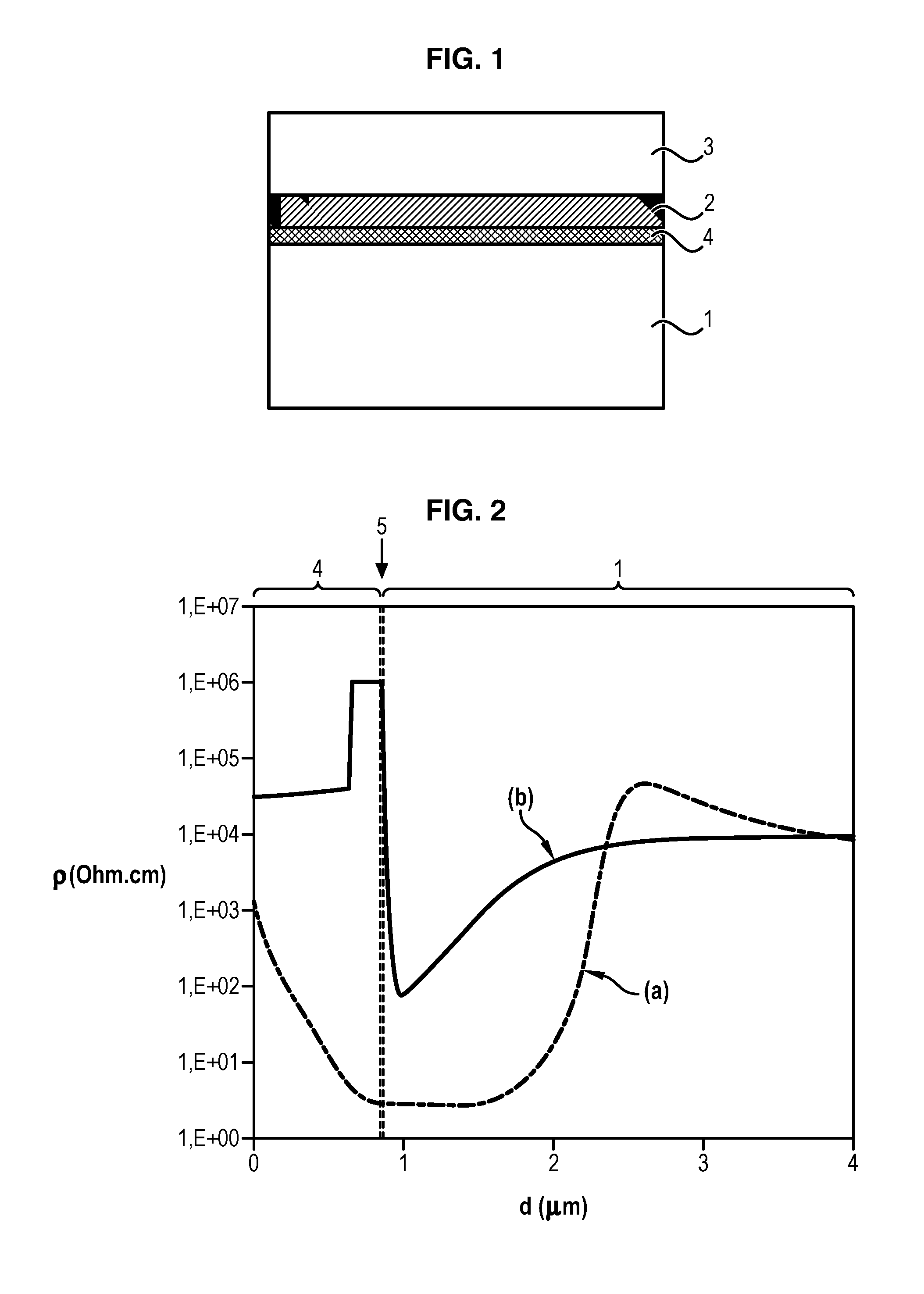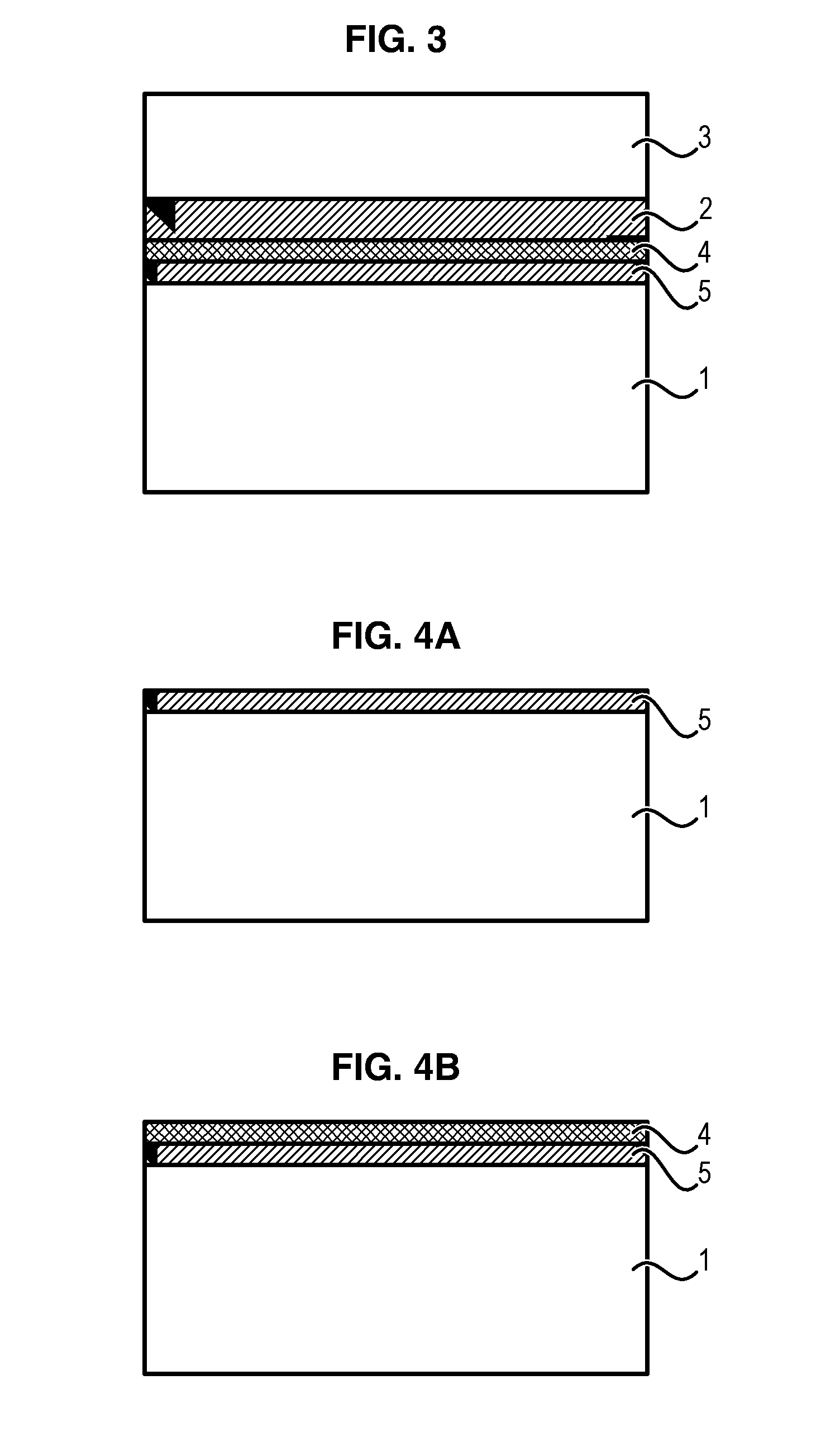Manufacturing method for a semiconductor on insulator type substrate for radiofrequency applications
a technology of insulator and substrate, which is applied in the direction of semiconductor devices, basic electric elements, electrical apparatus, etc., can solve the problems of poor logical device characteristics, low resistivity layer, and poor radiofrequency performance of soq and sos substrates
- Summary
- Abstract
- Description
- Claims
- Application Information
AI Technical Summary
Benefits of technology
Problems solved by technology
Method used
Image
Examples
example embodiment
of the Invention
[0147]A first step consists of applying special cleaning of the high resistivity silicon substrate.
[0148]The purpose of this cleaning is to minimise the quantity of doping agents (mainly boron and phosphorus atoms) at the substrate surface.
[0149]An appropriate cleaning method may for example include cleaning with hydrofluoric acid (HF) diluted to 0.2% to remove the chemical oxide, followed successively by cleaning with ozone and then hydrochloric acid (HCl) to form a thin layer of oxide (in other words with a thickness of about 0.7 to 0.8 nm). This cycle can be repeated twice to increase consumption of the silicon surface on which undesirable contaminants are located.
[0150]The next step is to form a thin layer of oxide (about 0.5 to 10 nm) on the surface of the high resistivity silicon substrate.
[0151]Adapted techniques include a standard thermal oxidation treatment known to those skilled in the art as Rapid Thermal Oxidation (RTO), dry thermal oxidation or a low te...
PUM
 Login to View More
Login to View More Abstract
Description
Claims
Application Information
 Login to View More
Login to View More - R&D
- Intellectual Property
- Life Sciences
- Materials
- Tech Scout
- Unparalleled Data Quality
- Higher Quality Content
- 60% Fewer Hallucinations
Browse by: Latest US Patents, China's latest patents, Technical Efficacy Thesaurus, Application Domain, Technology Topic, Popular Technical Reports.
© 2025 PatSnap. All rights reserved.Legal|Privacy policy|Modern Slavery Act Transparency Statement|Sitemap|About US| Contact US: help@patsnap.com



